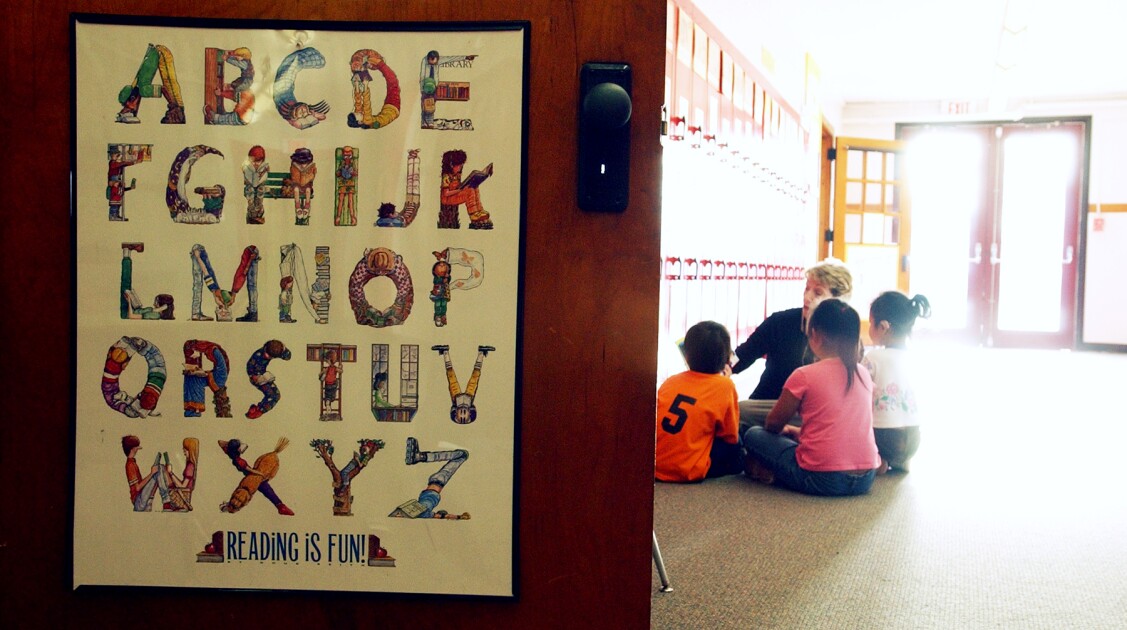Intentional collaboration between students, families, educators, and administrators. Re-imagining who controls assessments. Partnerships with universities for teacher professional development.
These were some of the topics discussed at length at the inaugural Improving Instruction, Assessment, and Policies for Secondary English Learners Across the Content Areas conference in Washington, D.C., on May 8 and 9.
English learners make up about 10 percent of the U.S. public school student population and are one of the fastest growing segments of the national student population, according to the latest federal data. When it comes to English learners in secondary schools, educators face a time crunch in ensuring students master the English language while also accessing the full high school academic experience and graduating on time.
To help address what schools can do for these older students, the Department of Education’s Institute of Education Sciences funded the Center for the Success of English Learners and the National R&D Center to Improve Education for Secondary English Learners in 2020. The centers came together to host their first joint conference this year where teachers, district leaders, and researchers attended sessions and keynote speeches covering a wide breadth of research, policies, and district-level case studies on supporting adolescent English learners in multiple academic content areas.
The biggest growth within the English learner population is coming from students known as long-term English learners, meaning they are still classified as needing English language acquisition support after six years of being enrolled in school, said Aida Walqui, principal investigator at the National R&D Center to Improve Education for Secondary English Learners.
“What that speaks to is precisely the lack of invitations to those students to engage in substantive, intellectually challenging activity that keeps them at the edge of their seats wanting to participate,” Walqui said.
Here are some of the main takeaways from the conference on what can be done to improve education and outcomes for these students.
Work to ensure students have access to the right coursework
At various sessions throughout the conference, researchers and district leaders pointed to trends in various states regarding older English learners’ lack of access to math and science courses required for high school graduation.
In some cases, it was a matter of shifting educator mindsets to what these students were capable of even as they worked on their English language proficiency. Some research also pointed to the need for school counselors trained in working with high school English learners specifically.
Speakers also covered the importance of policies regarding course scheduling to ensure students are eligible for more coursework, including career and technical education opportunities.
Partnerships matter when serving English learners
Recognizing that resources remain a challenge to serving English learners, whether it’s lack of specialized staffing or funding limitations, several conference speakers addressed the importance of partnerships to get work done.
On one hand, that can mean partnerships with universities as in the case of Oregon school districts that worked with Oregon State University researchers on developing better policies for their older English learners.
It can also mean working with English learners’ families to ensure they understand the U.S. education system. Guillermo Solano-Flores, professor of education at the Stanford University Graduate School of Education, spoke of how families should know whether schools offer summer programming as a means for students to stay on top of coursework.
District leaders shared how they had to explain to families that dual language programs would not make it harder for students to acquire English, as they erroneously believed that such programs would only focus on Spanish.
Intentionality in instruction, assessments, and policymaking is key
Whether speaking about how to improve classroom instruction, how to rethink assessments, and how to modify or create new policies around older English learners, speakers at the conference all discussed the need for stakeholders to be intentional in their work.
“We’re really making progress from the big picture point of view,” said Kenji Hakuta, professor of education emeritus at Stanford University. “At the same time ... we can’t get complacent about the external environment, political threats, and policy threats that are out there,” he added, referring in part to questions about supporting bilingual education and national legislative attacks on equity initiatives in schools.
Amanda Kibler, professor in the College of Education at Oregon State University, spoke of how educators and researchers need to think about serving the whole child in their given contexts. A student newly arrived from the U.S.-Mexico border, for instance, may have socio-emotional needs that go beyond academic needs but that play a role in their eventual academic performance. To meet these needs, district leaders, school leaders, teachers, specialists, and families must all work together.
If educators are serious about supporting English learners, Solano-Flores said, then they “need to be willing to invest time and money in large-scale testing and professional development for teacher assessment capacity.”
Specifically, he spoke of how teachers could and should take control of assessments. That can entail using multiple sources of information to make assessment decisions, developing their own formal formative assessment tasks in the classroom, and incorporating more interactions with their students—individually and in small groups—to better understand each student’s needs and skills.
In prepared video remarks, U.S. Secretary of Education Miguel Cardona reiterated the importance of multilingual education, the need for more multilingual educators, and the value of intentional collaboration among all stakeholders to serve English learners now more than ever.
“We cannot stop now, not when our English learners are still recovering from the impact of the pandemic, not when our programs are still being designed with little or no influence with what the research says, what the research has said for decades,” Cardona said.









